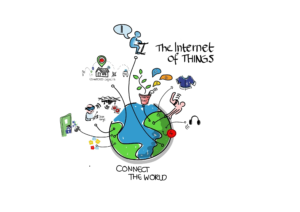How Major Tech Companies Are Tackling Cybersecurity Threats
How major tech companies are tackling cybersecurity threats is a critical issue in today’s digital landscape. The constant rise in cyberattacks necessitates innovative and robust security measures to protect sensitive information and maintain public trust. Cybersecurity threats encompass a wide array of malicious activities, from phishing attacks and malware infections to sophisticated ransomware attacks. These threats not only jeopardize sensitive data but can also disrupt business operations, leading to significant financial losses and reputational damage. This article explores the multifaceted strategies employed by major tech companies to bolster their defenses against these evolving threats. We’ll examine their investment in cutting-edge technologies, their development of robust security protocols, and their commitment to creating a strong security culture, along with strategies for collaboration and education. We’ll look at how proactive measures like threat intelligence, incident response, and zero-trust security models are transforming cybersecurity practices.
1. Investing in Advanced Technologies and Infrastructure
1.1. Utilizing AI for Proactive Threat Detection
Major tech companies are increasingly leveraging Artificial Intelligence (AI) to proactively identify and mitigate potential cybersecurity threats. AI algorithms can analyze vast amounts of data to identify patterns and anomalies that may indicate malicious activity. Machine learning models can be trained to recognize sophisticated attack signatures, detect anomalies in network traffic, and predict potential vulnerabilities.
1.2. Implementing Robust Security Protocols
Implementing strong security protocols is essential for safeguarding sensitive data. Companies use multi-factor authentication, encryption, and access controls to protect sensitive information. These security protocols must be regularly updated and refined to address new vulnerabilities and emerging threats. Data encryption plays a major role, ensuring that even if data is intercepted, it remains unreadable without the decryption key.
2. Building a Strong Security Culture
2.1. Employee Training and Awareness
One key aspect of a robust security strategy is fostering a strong security culture within the organization. Educating employees about cybersecurity risks is essential, as human error often plays a significant role in security breaches. Regular training sessions can increase awareness about phishing attacks, social engineering tactics, and malware risks, enabling employees to identify and report suspicious activity promptly.
2.2. Promoting a Culture of Security Awareness
Cultivating a security-conscious environment goes beyond training. Encouraging employees to report potential security incidents and implementing clear escalation protocols are crucial. Establishing a culture that empowers employees to actively contribute to security strengthens the overall defense mechanism. Creating an environment where employees feel comfortable reporting suspicious activity without fear of repercussions is a vital aspect of proactive cybersecurity.
Related Post : The Future of Smartphones Foldable Technology Explained
3. Collaborating and Sharing Threat Intelligence
3.1. Partnerships with Industry Organizations
Major tech companies recognize the importance of collaboration in the fight against cybersecurity threats. Partnerships with other industry organizations, including government agencies and cybersecurity firms, facilitate the sharing of threat intelligence and best practices. These collaborations enable companies to stay abreast of emerging threats and develop comprehensive defense strategies. Sharing threat intelligence and vulnerability data enhances industry-wide cybersecurity measures, ensuring collective protection.
3.2. Industry Standards and Regulations
Adhering to industry standards and regulations, like GDPR or HIPAA, is critical for safeguarding sensitive data. This approach reinforces commitment to data protection and enhances accountability, creating a clear framework for handling sensitive information.
4. Zero-Trust Security Models
4.1. Verifying Every User and Device
Zero-trust security is a security model that assumes no implicit trust. Each user and device must be continuously verified before accessing network resources, regardless of their location or network status. This approach helps to prevent unauthorized access to sensitive information. By implementing zero-trust security, major tech companies significantly reduce the risk of breaches initiated by compromised credentials or devices.
4.2. Continuous Monitoring and Adjustment
Zero-trust security requires constant vigilance. The system continually monitors and adjusts security policies based on the evolving threat landscape and user activities. The dynamic nature of threats necessitates a continuous cycle of adjustments and updates to maintain the effectiveness of security protocols. By continuously adjusting and monitoring, security professionals ensure optimal protection against unauthorized access, data breaches, and malware threats.
5. Incident Response and Disaster Recovery
5.1. Developing Comprehensive Plans
Major tech companies recognize that successful incident response hinges on having comprehensive plans in place. These plans outline clear procedures for detecting, responding to, and recovering from security incidents. A meticulously crafted plan aids in mitigating potential disruption and minimizing potential damage from a successful attack.
5.2. Regular Testing and Refinement
These plans must be regularly tested and refined to ensure their efficacy. Realistic simulations allow companies to assess their preparedness and make necessary adjustments in response to evolving threats. Companies should prioritize regular updates and simulations to enhance their preparedness and optimize the effectiveness of their plans.
6. Security Awareness Training
6.1. Building Employee Awareness
Empowering employees to recognize and report suspicious activity is critical for proactively mitigating risk. Companies invest in continuous security awareness training that equips staff with knowledge and tools to identify potentially dangerous situations, such as phishing attempts or other social engineering ploys.
6.2. Interactive Learning Strategies
Interactive learning techniques, such as simulated phishing emails or simulated hacking attempts, are used to engage employees and help them internalize the importance of security protocols in practice. This hands-on approach improves awareness and reduces the likelihood of employee errors leading to security breaches.
7. Proactive Threat Intelligence Gathering
7.1. Monitoring Cyber Threats
Major tech companies have dedicated teams that continuously monitor the cyber threat landscape to stay ahead of emerging attacks. These teams identify vulnerabilities and emerging threats in real-time, allowing companies to implement proactive measures to prevent attacks before they occur. Constant monitoring and analysis of evolving threats allows for swift adaptation of security protocols.
7.2. Analyzing Threat Indicators
This constant monitoring process involves the analysis of various threat indicators, from publicly available data on known threats to specific security incidents impacting the industry. By leveraging this data, companies can proactively identify and mitigate potential risks before they translate into actual attacks.
8. Incident Response Plans
8.1. Developing Response Strategies
Effective incident response plays a vital role in mitigating the impact of a security breach or attack. Major tech companies invest in developing comprehensive incident response plans, which include procedures for detecting, containing, and recovering from security incidents. These plans outline steps for rapid containment of threats, minimizing impact, and limiting exposure.
8.2. Simulating and Practicing Responses
Regular simulations and exercises help fine-tune incident response plans and assess preparedness levels. This process ensures that the response team is well-equipped to handle various scenarios in real-world incidents, which allows for iterative improvements in response strategies. Through these practice exercises, companies can ensure their response protocols are efficient and effective when encountering a cybersecurity threat.
9. Data Security and Privacy Measures
9.1. Compliance with Regulations
Major tech companies are obligated to adhere to strict data security and privacy regulations. This compliance, whether GDPR, CCPA, or other region-specific regulations, ensures that personal data is handled securely and responsibly. This adherence contributes significantly to fostering trust and maintaining ethical practices.
9.2. Implementing Data Loss Prevention Strategies
Robust data loss prevention strategies are implemented. These strategies aim to prevent sensitive data from leaving the company’s control, reducing the risk of unauthorized access. These proactive strategies play a major role in ensuring data security and limiting potential exposure to threats that exploit sensitive data loss.
In conclusion, major tech companies are proactively addressing cybersecurity threats through a multi-faceted approach. Investing in cutting-edge technology, fostering a robust security culture, and promoting collaboration with industry partners are crucial for mitigating risks and safeguarding sensitive data. To stay ahead of evolving threats, companies need to continually adapt and enhance their security strategies, which includes embracing AI-powered threat detection, implementing zero-trust security models, and continuously educating employees on best practices. By adopting these strategies, businesses can mitigate the risks of data breaches and maintain public trust. Learn more about the latest cybersecurity trends and best practices to protect your business and customers by visiting [link to relevant resource].
Share this content:














Post Comment